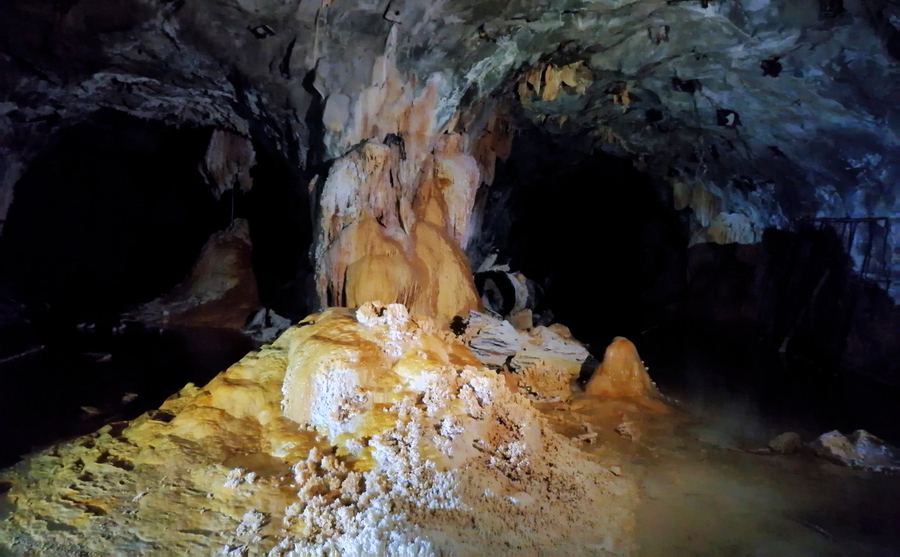JINR scientists discovered new microorganism genomes in Baksan Neutrino Observatory
News, 15 January 2025
As part of a study of an underground microbial community of a hydrothermal spring located at a depth of about 2 kilometres in the Baksan Neutrino Observatory tunnel, researchers of the Laboratory of Nuclear Problems at JINR discovered and analysed a previously unknown community of 19 microorganisms that includes new bacteria genera. The results of the scientists’ work will broaden the understanding of the biodiversity of deep underground ecosystems and ways to adapt to living deep underground. In addition, the research will make it possible to find applications for unique functional genes from such microbiomes in biotechnological production and bioremediation of polluted environments.
 Photo from the archive of Mikhail Zarubin (DLNP JINR)
Photo from the archive of Mikhail Zarubin (DLNP JINR)
Underground microbial communities living in extreme conditions of deep hydrothermal systems are of considerable scientific interest, but the inaccessibility of these habitats limits the opportunities to study them. The Baksan Neutrino Observatory (BNO) of the Institute for Nuclear Research of the Russian Academy of Sciences, located in one of the gorges of the Main Caucasus Range in Kabardino-Balkaria (Russia), is one of the unique research platforms that provide access to underground hot springs. This opens up new opportunities for studying underground extremophiles (microorganisms adapted to extreme environmental conditions) and determining their biotechnological potential.
During the analysis of the collected samples from the unused part of the BNO tunnel, the scientists were able to obtain 19 high-quality genomes (MAGs) recovered from the metagenomic data of the microbial community under study. The dominant taxa in this community were representatives of Pseudomonadota (including the classes of gamma, beta, and alphaproteobacteria), Planctomycetota, Myxococcota, Nitrospirota, Cyanobacteria, Gemmatimonadota, and Armatimonadota. All 19 microorganism genomes were officially registered in the open USA GenBank database of genetic sequences of the National Institutes of Health (NIH) and can be freely used by other scientists.
More information about the results of the work of the DLNP JINR Molecular Genetics Cell Sector employees is available in Microbiology Resource Announcements. The authors of the publication are Kirill Tarasov, Elena Kravchenko, Mikhail Zarubin, and Alena Yakhnenko. The research was supported by the Russian Science Foundation (RSF).